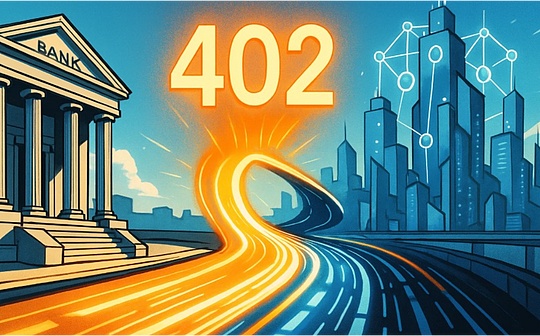
In financial markets in October 2025, a series of regional banking incidents emerged like cockroaches, exposing deep cracks in the credit system.The latest disclosures from Zions Bancorporation (hereinafter referred to as Zions) and Western Alliance Bancorporation (hereinafter referred to as Western Alliance) are not isolated, but are intertwined with similar issues at First Brands and Tricolor, jointly pointing to the collapse of collateral trust.This is not just a label of fraud, but a systemic risk embedded in the context of macroeconomic transitions and monetary tightening.Based on recent events, this article analyzes the causes and impacts of collateral issues and their connection to global economic dynamics.
1. The emergence of collateral issues: starting with Zions and Western Alliance
On October 16, Zions and Western Alliance successively announced credit problems involving Cantor Investment Fund, causing market shock.Zions provided revolving credit lines to the Cantor II and Cantor IV funds several years ago for commercial real estate mortgage loans.The loans were supposed to be secured by first-priority collateral, but an investigation revealed that many of the notes had been transferred to other entities and that some were in foreclosure or were about to be foreclosed.This resulted in Zions’ unsecured credit exposure, potential losses of $50 million, and litigation to recover more than $60 million.Western Alliance faced a similar dilemma, with assets in its mortgage arrangements being misappropriated, causing credit that was originally safe to become unsecured.The bank also filed a lawsuit accusing Cantor Group V LLC of fraud but emphasized its collateral coverage obligations and maintained 2025 financial guidance.
These events have their roots in the market frenzy of the low-interest-rate era.Over the past few years, banks have rushed to “make the deal,” ignoring due diligence and shelving documents in hopes of what Federal Reserve Chairman Jay Powell proclaimed was a “perfect economy.”However, when economic pressure increases, distressed funds begin to double pledge or abuse collateral in order to survive.The Wall Street Journal reported that this is not an isolated case, but a common gray area in the shadow banking and private credit fields.
Similar problems appeared as early as September.Tricolor Holdings went bankrupt due to double collateralization of subprime auto loans, warehouse lenders accused it of fraud, and about 40% of active loan vehicle identification numbers were invalid, triggering a judicial investigation.First Brands Group filed for Chapter 11 bankruptcy on September 29. Creditors claimed that accounts receivable and inventory had been financed multiple times, missing $2.3 billion, and had liabilities exceeding $10 billion, affecting many international banks.JPMorgan Chase CEO Jamie Dimon warned on October 14 that these are “cockroaches” and their appearance often indicates more problems.
The media called it “fraud,” but the essence was collateral abuse.In the Eurodollar system, collateral is at the heart of the liquidity cycle.Once trust breaks down, the entire system is hampered, leading to a credit crunch.Zions and other incidents triggered a plunge in bank stocks. Although they rebounded the next day, the knee-jerk reaction reflected investors’ anxiety about broader risks.
2. Macroeconomic Background: From “Forget Growth” to “Remember Recession”
The collateral crisis is embedded in global macro transitions.Although the banking crisis in 2023 (the collapse of SVB and the Credit Suisse incident) has been downplayed by the mainstream, it is still fresh in the market’s memory.Bond market warning: German curve, U.S. debt reflect long-term consequences.
The economy is currently transitioning to the flat part of the Beveridge curve.On October 14, Powell pointed out in his speech that the job market is weak, the trend of low hiring and low firing continues, and the risk of unemployment is rising.The Beveridge curve depicts the relationship between the unemployment rate and the job vacancy rate: a flat signal signals recession.The non-farm payrolls report in July was negative and the data since August has been weak. Companies have shifted from “forgetting to hire” to “remembering to fire”.This affects consumer debt repayments and increases default rates; if small and medium-sized enterprises lay off employees, their debt service capabilities decline, similar to the plight of First Brands.
From a global perspective, China is also experiencing a flat Beveridge curve and a slowdown in growth.Geographical risks (such as tariffs) have been postponed but not eliminated.The expansion of shadow banking ignores risks, and now the economic slowdown has triggered the consequences of “credit stupidity”: more companies are on the verge of bankruptcy and collateral problems occur frequently.
3. Monetary Tightening Signal: Alarm on the Fed’s Repo Facility
Collateral doubts are intertwined with monetary tightening.The Federal Reserve’s Standing Repurchase Facility (SRF) borrowed US$6.5 billion on October 15, the first significant use at the end of the non-quarter, signaling a tightening of liquidity.The mainstream blames quantitative tightening (QT), but as with the 2019 repo crisis, it is not reserve levels but risk aversion that makes dealers reluctant to circulate reserves, cash and collateral.
More signals:
-
Repurchase failure rateIt has risen since the jobs report, pointing to constraints in the flow of collateral.
-
Reserve assets of foreign official institutionsNet sales have been significant since April. In July, private net purchases were US$72.4 billion and official net purchases were US$6.4 billion. However, the overall shortage of US dollars was obvious.The 2020 crisis used $161 billion, which is similar in size to the current one, to ease the euro-dollar squeeze.
-
US dollar exchange rate The euro weakened and DXY strengthened, reflecting higher US dollar access fees charged by dealers.
These are consistent with collateral issues: under austerity, banks review collateral a second time, leading to more exposure.
4. Market reaction and systemic risk
On October 17, the market was shaken: gold soared to a record high, rising by more than $120 per ounce in a single day (later falling back), reflecting safe-haven demand.The two-year U.S. bond yield fell to 3.41%, and the ten-year U.S. bond yield fell below 4% to 3.99%. The steepening of the bull market confirmed the consequences of tightening.Bank stocks plunged in a sign of anxiety.
The Eurodollar system relies on collateral trust.A collapse would freeze liquidity, similar to 2008 (although not a repeat).Shadow banking amplifies risks: lack of supervision and huge credit scale.Currently, the economy is leaning toward recession, austerity is intensifying, and more companies are abusing collateral, forming a chain.
The rise of Bitcoin has been misinterpreted as a collapse of the US dollar. In fact, it is linked to the Nasdaq and has nothing to do with the contraction of the US dollar.
5. Outlook and Enlightenment: Tuning out the noise and examining the hidden truth
Collateral issues mirror macro inflection points.From Zions to global bonds, everything points from an optimism bubble to a risk awakening.Although the Fed “wins” the 2023 battle (BTFP), the market is alert.Beveridge flattening predicts rising unemployment, defaults, and collateral abuse.
Investor alert: Mainstream narrative obscures the truth.The real problem is the structural flaws of the eurodollar: dealer aversion, dollar shortages, shadow credit stupidity.Ignore these and you will repeat the same mistakes.
It is recommended to delve into currency signals: interest rate swaps, repo failures, reserve flows.These “hidden truths” are obvious but obscured by the noise.Resources such as Eurodollar University help interpret the market rather than authoritative comments.
In short, events such as Zions are a wake-up call, reminding us that the system is fragile.As the economy “remembers the recession”, the collapse of collateral may trigger a widespread crisis.Look early and tune out the noise to prepare for the storm.






